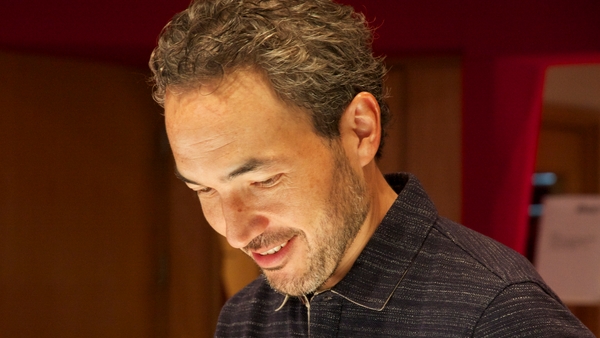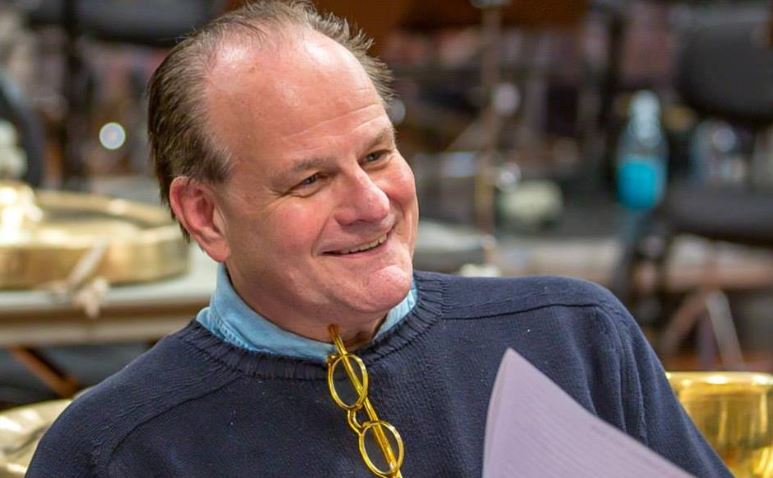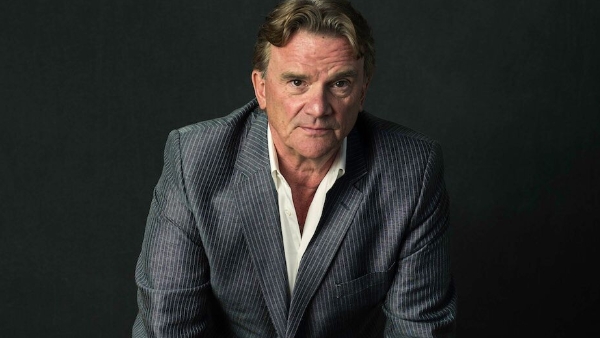
To many, John Z. DeLorean is a man steeped in equal amounts of esteem and intrigue. He lived a fascinating life, but after his time with GM, he reached point where all his fame turned to infamy.
In the 30 minutes I spent with director Nick Hamm, we discussed the road he wanted to take to bring this character to the screen. Hamm admits that DeLorean’s life isn’t interesting enough for him to have taken the biopic route, and similarly, a documentary might have felt stale. So basing this narrative around the actual events of DeLorean’s attempts to start and save his car company (including the cocaine sting operation that ruined everything) gave Hamm a short but exciting window of time to chronicle.
Trying to determine what’s fact and what’s fiction makes Hamm’s take on this story so fascinating; in a way it mythologizes the man through a glitzy true-crime tale. It highlights, in some comical ways, the people and circumstances surrounding DeLorean (played brilliantly by Lee Pace) as he would do literally anything to keep his dream alive.
Enjoy our lengthy discussion with Nick Hamm.
GoSeeTalk: This was a very entertaining and captivating film. I would assume everybody probably wanted to take on this story, so how did you get to bring it to life?
Nick Hamm: I developed this story and came up with the idea with my writing partner while we were working on our last film. We’re both from Belfast, and we’d always been fascinated with the DeLorean subject. Here was a guy who built a factory in the middle of war-torn Belfast, employed Catholics and Protestants, had his factory fire-bombed by the IRA, and then you juxtapose that with cocaine parties in Southern California, so you sit back and go, “ok, now this is an interesting story.”
For years we had been thinking about this, but we knew we didn’t want to do a biopic. I think the mistake that everyone in Hollywood made is that they went for the biopic angle. I don’t think he’s an interesting enough character to do that with. Also, with a biopic, you’re restricted by the truth, if that makes sense. You’re not liberated by what you can do.
If you say “it’s a biopic,” you have to be real, you can’t go and invent stuff. You can imagine a conversation, but you can’t say they did something when they really didn’t. So I think that the mistake others would have made would have been in going for a linear story, and a documentary seemed boring because it’s just a repetition of the facts.
So once we discovered that character of Jim Hoffman that was our way into this. Here’s a character who would allow us to illuminate a bit of history of the time in a very unreliable way. He’s a narrator who is basically a liar, so there was a lot of dramatic potential there that we got to invent because we’re seeing it through the eyes of an untrustworthy person.
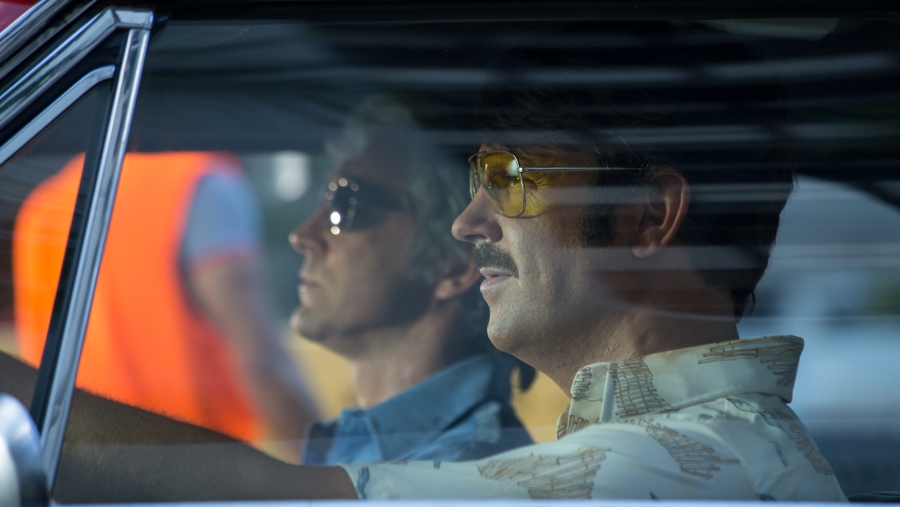
The credits state very clearly that this was a work of fiction, and I’m curious what percentage of fact vs. fiction you played with. You can make DeLorean into anyone you want, but how much information could you have gotten on a person who has been in the witness protection program for almost 40 years?
You asked the exact same question that we did at the beginning of the whole process. That defines the process of writing and creating before you get anywhere near filming. I guess what becomes interesting is what you can read between the lines. What was redacted in the court? You could take certain truths from video – you can see DeLorean pick up the cocaine in the hotel room. You know what happened when he was in court. Now because I did a lot of research, I know what happened in the car on the way to the court…but I didn’t put that in the movie. I know what happened in the room next to the room where he got busted…but I didn’t put that in the movie. There’s lots of different truths of incidents.
What was one example that comes to mind?
The guys next door were so keen on getting DeLorean that the DEA agent who was working with the FBI and the Attorney General of L.A. ordered a bottle of champagne and toasted as soon as he was arrested. They said, “here’s to us being on the cover of TIME magazine.” It was the narcissism of the FBI at that moment that was interesting. But then you have to ask yourself if you really believe that. And if you do, you start to wonder how that could happen. Then there was the whole court case which was a circus. I mean, Larry Flynt went to the court – he arrived in a convertible with three go-go dancers…that’s not in the movie. So what’s in the movie are elements of truth.
To go back what you asked about Hoffman, it is true DeLorean’s Summer pad in Pauma Valley was next door where Jim Hoffman was living. Their kids were roughly the same age and they played in the street – that’s how they became friends. What was also true at that point is that Hoffman was working for the FBI trying to get Morgan Hetrick who was directly brining drugs directly into Southern California from the cartels in Mexico.
What gives you narrative and fictional ability to be entertaining is if you can combine truth with untruth and truth with fiction in a spirited way, then the audience is intelligent enough to come out of the movie questioning things as opposed to taking it at face value as entirely factual. It’s fascinating because that’s the world we live in.
Watching this, I thought a lot of how Quentin Tarantino took things with Inglourious Basterds. It’s not fantasy to him because he believes that, should a certain number of things have happened differently, and should those characters really existed, the war could have taken a different turn. So this feels similar in the sense that you don’t know all the beats between point A and point Z, but you fill in as needed to craft a compelling story.
[Laughs] But isn’t that our job as well? As writers, we take the audience on a ride. You can watch the documentary if you want facts, but some of the facts just aren’t that interesting. But not everyone knows all the facts, not everyone knows what Reagan said to Maggie Thatcher. Thatcher hated DeLorean because he represented everything she stood against.
She came to power, and the labor government prior to her coming into power was the ones who had given DeLorean the money, so she could not turn around and say to DeLorean’s people running the factory that they were closing things down. She was dealing with a civil war in Northern Ireland, and she would be taking jobs away from Catholics and Protestants.
So how much went into her relationship with DeLorean…I’m could go into conspiracy theories now, but she hated him. We don’t know what went on, and what kind of winks and nods landed that deal. What was DeLorean’s relationship with the IRA? I know a lot of that…but none of that is in the movie.
Lee Pace is amazing. What, in your eyes, made him right for the role? And when did things really start to come together for you?
What Lee has is an effortless 1950s movie star charm. He can sit on the front bonnet of a car with a martini and a cigarette and just look graceful. That’s kind of what DeLorean had – he was a tall handsome man who projected an image of himself being very at ease with the world, yet underneath he was peddling furiously. Lee had a grace to playing him and he allowed you in privately.
He played the showman, but he also gave you the private moments. I saw all of that in the make up right before we were about to go shoot and we put it all together. We’d rehearsed and I knew that from about a month before the shoot – we met in an apartment in New York and read, rehearsed and reworked the whole thing.
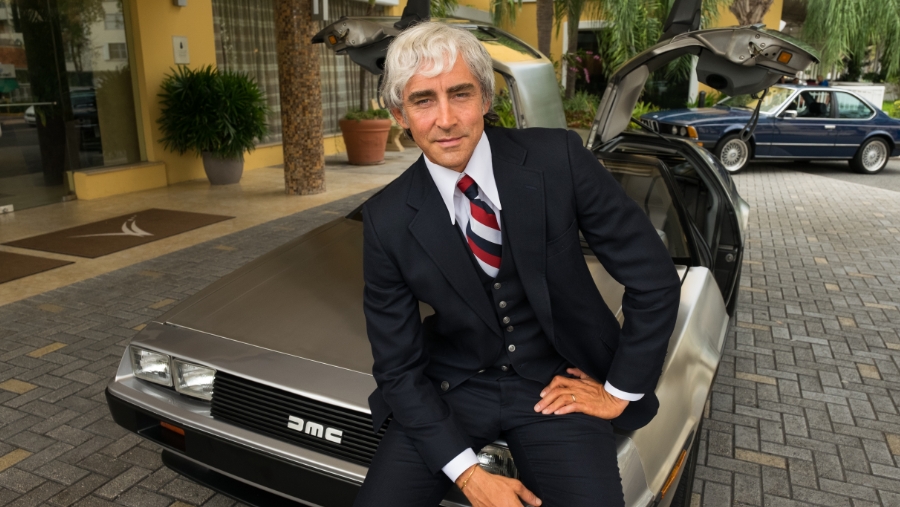
Lee’s role as DeLorean echoed the character of Joe MacMillan from Halt and Catch Fire. The similarities were coincidental, but while both try exude charisma, they both are, like you mentioned earlier, just a duck on the water.
I think that’s what Lee does, and that’s what we needed in that role. He was perfect for it.
Do you think at the end of the shoot, Lee got to go home with that over-sized portrait of him as DeLorean?
[Laughs] Oh, that’s a great question! I’ll ask him for you. He’ll love that. [Laughs] But isn’t it incredible that DeLorean had that picture of himself? Imagine putting that in your own front room. And it wasn’t just a poster, or a small photograph…it was enormous.
There were portraits of his wife everywhere, too. It was excessive, but did you take that and embellish or inflate their decor for the movie?
No. [Laughs] What you saw was accurate. And that’s vanity for you, man.
On that note, let’s get into the look of the film. When you look at something period specific, like Blow, the visuals always seem very vibrant. What is the mindset behind punching up a color palette in post-production?
Actually, we didn’t do a lot in post. We didn’t punch it; we put it in camera from the beginning, for real. Blow did that as well, and that’s a really good picture. If you put those costumes and that palette on camera, there’s a lot of primary colors, and there’s a lot of graphics. The clothes are kind of their own universe. Some of those pants are just incredible, like Jason Sudeikis’ blush colored suit. Can you believe the look of that? But you just play it for real, and what you get on screen looks great without any tooling or tweaking.
I was very aware that lots of people had covered this period, and lots of great directors have done this look, but then I also grew up with this and it was familiar to me. I almost wanted to make a throw-back ‘70s picture if that makes sense. I wanted to back to an older format of filmmaking that I sort of think we lost a little bit. I thought Green Book was wonderful because it was historic with its characters. Sometimes it’s quite hard to get financing for just a story and characters. It’s quite difficult because everybody wants genre now.
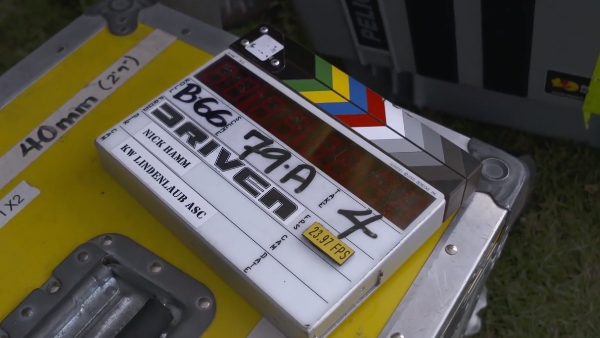
So that’s why there were 15 executive producers, huh? Was that also needed after Hurricane Maria – for insurance money? That seems like a story in and of itself.
[Laughs] We can laugh about it now, but we were lucky to get back to work in Puerto Rico. We hadn’t taken out insurance, and when we went down to shoot, they told us there hadn’t been a hurricane in 75 years. We had a whole debate about it, and luckily we had taken out insurance. Otherwise, the movie would have been dead. Luckily we had shot for five days before the hurricane came in.
As you know, on independent movies, most of the money is due on day one of principal photography. In pre-pro, the financiers are in on paper, but as soon as you hit first day, you trigger everything – all the pay-to-plays – so after five of six days, you’re 5 or 6 million in. And that’s when Maria hit. If Maria hit four days earlier, they’d have lost a million dollars and walked away. No one is going to walk away from 5 or 6 million.
I watched the documentary about the efforts after Hurricane Maria to keep the shoot going, and how the entire team in Puerto Rico rallied to continue making the movie. It was a tremendous effort – you should all be commended. But it’s amazing how similar the doc is to John’s quest to keep his car company alive.
As you saw from the doc, it’s very strange when a natural emergency occurs because two things happen simultaneously. First, there’s no power. Next, when there’s no power, there’s no credit cards which means no money. No money means no gasoline, and that means no power because everything is running off generators. There was a real decision, we had to make. Were we going to be a burden when we go back, or are we going to put back? What was the solution?
Well, there was no question that we had to go back. With our Puerto Rican crew, we employed 400 people. If we didn’t go back, the movie would have died, but the entire film industry in Puerto Rico would have taken ages to get back ages to get going again. The fact that we went back was good for them, then Sony went back with a TV show, and someone went back after them, and now the business is thriving.
That’s a good example of Hollywood, which can be viewed as pretty narcissistic and self-serving at the best of times, actually putting something back and giving to a community. The end result is a movie coming out of that which makes them proud and wins the Venice Film Festival.
You’re right, there’s a certain parallel in DeLorean fighting to keep his company going and spuriously thinking and asking, “if I do a drug deal, is this really going to work?”

My favorite part is a line where John tells Jim that his wife divorced him. He says, “I guess not everyone needs a DeLorean.” It’s played for laughs, but it’s also kind of sad. What was your favorite line, and what were you happiest to see play out on screen?
She left him three weeks after the trial, and the reality is that’s why that line is there. For me, I really like what Jason says in the court. It’s the line, “It’s hard to say.” If you listen to that now, it’s quite a good line for someone who wants to confuse his audience. He’s asked a very, very, very direct question, and he just cannot give a direct answer. [Laughs] It’s so great, and that’s the movie in that one moment. It goes back to that whole truth thing. We just don’t know, so the fun is in us playing with the story. I don’t think I’ll be the last to depict DeLorean, but I’ll probably be the last to do anything with Hoffman. I think he’s exhausted, but I don’t think John is.
Nick, it’s been a pleasure. John is an icon, and so is his car. Hopefully you can do something with a Fiero in your next endeavor.
[Laughs] Really? [Laughs] I love it. That’s funny. I’ll let you know how that goes, but don’t hold your breath.
Thanks to Nick for his time. DRIVEN stars Lee Pace, Jason Sudeikis, Corey Stoll, and Judy Greer. From Universal Pictures, the film is set for release in theaters and on digital/demand August 16, 2019.
A fast-paced, comedic crime thriller of a bromance gone wrong between John DeLorean, played by Lee Pace, and Jim Hoffman, played by Jason Sudeikis. Set in early 1980s California, the story follows the meteoric rise of the golden boy of the automotive industry, John DeLorean (Pace) and his iconic DeLorean Motor Company, through the eyes of his friendship with charming, ex-con pilot turned FBI informant, Jim Hoffman (Sudeikis). DeLorean turned to unsavory activities to save his financially troubled DeLorean Motor Company, and it was Hoffman who was all too willing to lure the car designer/engineer into a cocaine trafficking ring set up by the FBI. Isabel Arraiza is Cristina DeLorean, DeLorean’s fashion model wife, Judy Greer is Ellen Hoffman, Hoffman’s direct, no nonsense wife and Corey Stoll is ambitious FBI Special Agent Benedict Tisa.
